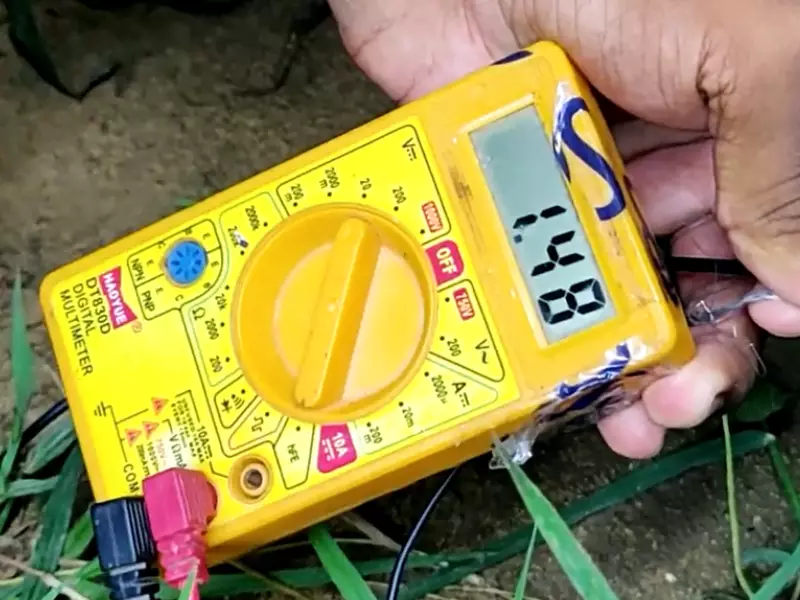The sun, a colossal energy powerhouse, fuels our planet. Solar panels, designed to capture and convert this immense power, have become central to sustainable energy conversations. However, a question that often emerges is whether these photovoltaic devices can function beyond daylight hours, using moonlight, for instance.
Solar panels, in essence, convert sunlight into electricity. However, their operation is not strictly limited to daytime. Although the intensity of energy produced significantly decreases after sunset, it does not entirely cease. Indeed, in certain conditions, moonlight can induce a marginal energy output from solar panels.
What if solar energy could be harnessed around the clock? Wouldn’t that revolutionize the way we perceive and use renewable energy? This article delves into the fascinating dynamics of solar panels, exploring their functionality under different conditions, including their performance under the moonlight.
A Look at Solar Panels
Solar panels are devices that convert light, predominantly sunlight, into electricity. They contain cells made of semiconductor materials, usually silicon, that facilitate this energy conversion. When light strikes these cells, it dislodges electrons, triggering an electric current.
Each solar cell within a panel comprises multiple layers of silicon. When sunlight strikes the cell, it excites the electrons in the silicon, propelling them to move and create an electric current. This process is known as the photovoltaic effect. The stronger the sunlight, the more electricity is generated. However, does this mean that weaker light sources, such as moonlight, are incapable of stimulating these cells? Let’s investigate.

Solar Energy: The Daytime Dynamo
How Many Hours of Sunlight Do Solar Panels Need?
On average, solar panels require around 5 to 6 hours of peak sunlight to function efficiently. However, this is not a strict rule, as even diffused sunlight on a cloudy day can generate electricity, albeit at a lower efficiency.
Peak Sun Hours: Understanding the Concept
‘Peak sun hours’ refers to the amount of solar energy available at a specific location during a typical day. It’s a measure of the intensity of sunlight, accounting for various factors such as the time of year and local weather conditions. Peak sun hours usually occur between 9 am and 3 pm.
Do Solar Panels Work On Cloudy Days?
Contrary to popular belief, solar panels can generate electricity on cloudy days. While their efficiency might decrease due to less direct sunlight, the panels can still harness the diffused sunlight that penetrates the clouds. For instance, a typical solar panel might produce only 10-25% of its rated capacity on a heavily overcast day. Yet, this is not insignificant and can contribute to a solar energy system’s overall productivity.
The Night Shift: Solar Panels After Sunset
How Do Solar Power Plants Work at Night?
Solar power plants can indeed operate during the night, thanks to energy storage solutions like batteries. During the day, solar panels often produce more electricity than a household can consume. The excess electricity is stored in batteries for use during nighttime or sent back to the power grid, depending on the setup.
Can Solar Panels Charge with Moonlight?
The short answer is yes, but the energy produced is incredibly minimal. Moonlight is essentially reflected sunlight. However, it is far less intense – about 1,00,000 to 5,00,000 times weaker. As such, while solar panels may technically produce electricity under moonlight, the output is negligibly small, barely registering on most measuring devices.
When Solar Panels Met Moonlight?
Researchers at the German Fraunhofer Institute for Solar Energy Systems conducted an intriguing experiment to test this phenomenon. Their study found that under optimal full moon conditions, solar panels could produce about 0.002% of their nominal power. Hence, while technically possible, the power yield from moonlight is negligible in practical terms.

Enhancing Solar Panel Efficiency: Tips and Innovations
Increasing Efficiency: Tracking the Sun
Solar tracking systems are innovative solutions designed to enhance solar panel efficiency. These devices adjust the panels’ orientation throughout the day to follow the sun’s path, thereby maximizing exposure to sunlight.
Other Influential Factors on Solar Panel Performance
Aside from sunlight, factors such as temperature and panel angle also significantly impact solar panel performance. Cooler temperatures often enhance solar panel efficiency, while optimal panel angle ensures maximum sunlight capture.
Emerging Technologies and New Solutions
With advancements like bifacial solar panels that can absorb light from both sides, and perovskite solar cells offering higher efficiencies, the future of solar energy is promising. These technological innovations aim to harness more energy from the sun and potentially, other light sources.
Solar Power and Beyond
What does the future hold for solar energy?
The future of solar energy is bright. With technological advancements, we can expect to see even more efficient solar panels that can function under varied light conditions, including low light.
Innovative Practices and Future Challenges
While current technology does not support significant energy generation from moonlight, it remains an intriguing possibility for the future. Researchers continue to explore how we can more effectively harness light from various sources, and who knows, we may one day capitalize on the moon’s light as a sustainable energy source.
The Solar Dream – A Reality or A Far-fetched Idea?
Is round-the-clock solar power generation a far-fetched idea? Perhaps not. The relentless march of technology brings this dream closer to reality with each passing day.
Conclusion
While moonlight may not significantly contribute to electricity generation today, the notion of 24/7 solar energy is becoming less of a dream and more of a possibility. As our understanding of photovoltaic technology deepens, and our grasp of sustainable energy grows, we edge closer to a future powered entirely by the sun, and yes, maybe even the moon.
